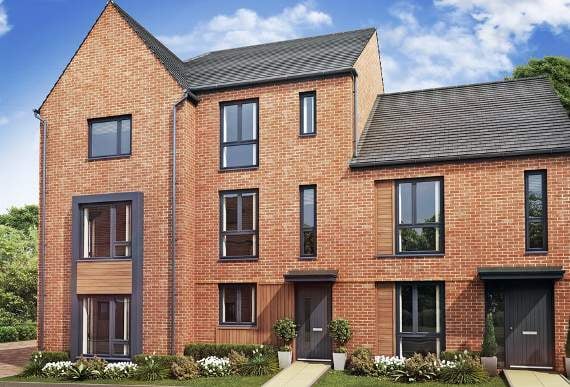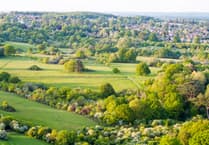Barratt Homes, which is developing 500 new dwellings at the former Louisburg Barracks in the north of the town, this week heralded the launch of the first batch of new houses.
The new neighbourhood, dubbed New Quarter, is proving popular, with all 10 homes already sold.
“I am delighted with the response we have had since the launch of this exciting new development,” said sales director Michelle Storer. “During our very first weekend, we sold 10 of these beautiful new homes, with each of our buyers taking advantage of Help to Buy.”
The Government scheme is available on all new-builds valued up to £600,000, and people can become homeowners with just a five-per-cent deposit.
Help to Buy offers assistance which can boost deposit savings and help with mortgage payments through its shared ownership and equity loan systems. It is seen as a way of helping first-time buyers to get on to the property ladder.
“The success of this outstanding new development is no surprise to us,” she added. “The homes here are very appealing - not only to local people but also to buyers from further afield who can’t resist the temptation to settle in this sought-after location.
“I fully expect the popularity of New Quarter to increase over the coming weeks, and urge anyone who is keen to take a closer look to come and see us soon - and see for themselves everything this excellent development has to offer.”
Current availability includes the three-bedroom Asphodel, Elderleaf and Redwing house designs, priced between £320,000 and £350,000.
The Louisburg development is the second large-scale piece of the town’s regeneration, following in the footsteps of 100-home Quebec Park.
According to developers, it will be able to “address the key principles of the Green Town Vision”. This will see Leicestershire-based Barratt working on an “enhancement to biodiversity” and creating a “green neighbourhood”.
A resounding hope from residents has been to retain a sense of character and, where possible, keep the former barracks’ rich history in mind.
Addressing this, Barratt’s heritage strategy has been “an important consideration in the evolution of the design proposals for the site”.
The barracks and the wider area has changed considerably over the years as it has served the military, however there are a number of notable buildings - Amherst House, Broxhead House and Barbados House (home to the Phoenix Theatre) - which are to be retained.
An “integrated approach to heritage” is being taken, which will be “utilising the depth of history” to “embed the heritage in the public realm of the new development”.
Various measures - such as “heritage by retention”, by “numbers”, by “colours”, by “structure” and by “reclamation” - will be used.
For example, there are plans to plant 223 trees, representing the number of horses historically in each brigade. A focal green space, Parade Park, will measure 103 metres by 103 metres to represent the 103 Royal Field Artillery Brigades stationed at the barracks. There will also be 1,907 horseshoe prints in the paving to reflect the year the barracks opened. And the colours red and blue will feature prominently in the design to represent the Royal Artillery’s colours.
Also taking shape at the end of the town is the Future Skills Centre, a new post-16 educational facility which will provide vocational training, with a focus on construction skills, and is seen as an essential way to encourage developers to use a local workforce.
With the first part of the relief road now open, motorists are able to drive down Louisburg Avenue to see how the development is progressing.
“Phase one (of the new road) is open so people can use it,” said a county council spokesman. “However, we are not encouraging it as it doesn’t actually lead to anywhere at the moment.
“Saying that, when the show homes open then of course people will be using it to access them.”




